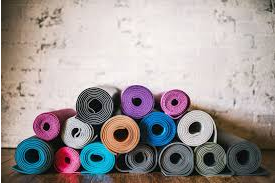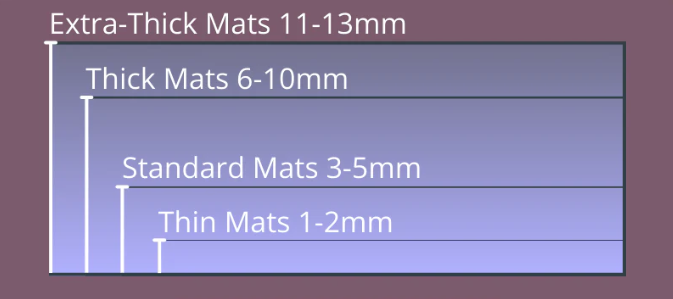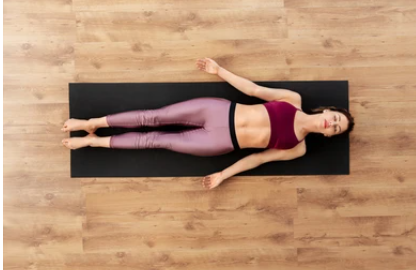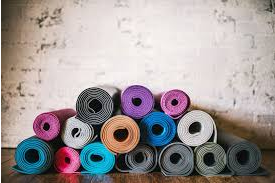I bet you’ve been there: holding a yoga pose, and suddenly you’re wobbling at the very edge of your mat, right? Based on my experience, getting the right custom yoga mat is a huge help. I find it makes your practice feel so much more comfortable. It also makes things smoother, without any fuss. I often hear people focus on mat thickness and what it’s made of. And those are important! But from what I’ve seen, selecting the correct length and width is just as vital. And, you know, there’s one small detail I think many people miss. I truly believe paying attention to this can make a big, positive change to your yoga sessions.

Standard Yoga Mat Size
From my experience, I find the 68 by 24 inch mat (173 by 61 centimeters) feels like my own special space when I unroll it. This space is just for me and my yoga. I’ve noticed this standard size supports my body very well during practice. It gives me enough room for those wide, extended poses. At the same time, I feel secure and focused on the mat. When I roll it up, it becomes easy to carry. It’s a great companion for my trips to and from the studio. I feel like I’m carrying a little bit of my peace with me. I really recommend this mat size for most people who practice yoga. It’s like having your own peaceful spot. I think it’s just right – not too large and not too small.

Who I Recommend This Mat To
From my experience teaching yoga, I find this mat size is great for people of average height, just like me. When I unroll this mat, it supports my body well.If you’re new to yoga, I understand. I recall my own first, unsteady days! So, I really recommend this mat size. It’s easy to manage. I believe it won’t feel too big or intimidating as you learn your poses and find your stability.
For those who practice yoga now and then, I’ve seen this mat become a good partner. It gives you enough room to stretch and breathe. You won’t find it a big, awkward thing to carry to your class. I feel it’s like a trustworthy friend. It’s there when you need support but doesn’t ask for too much space or attention.
Alternative Sizes
- Longer Mats: For taller individuals, mats measuring 72 inches (183 cm) are available, which can prevent feet or hands from hanging off.
- Narrower Mats: Some yogis might prefer mats that are 24 inches (61 cm) wide for more compact practice areas.
My Take on Yoga Mat Essentials
Thickness That Makes a Difference
When I’m shopping for yoga mats, I always pay close attention to thickness. I’ve found that mats between 1/8 inch (3 mm) and 1/4 inch (6 mm) make a big impact on how my practice feels. I have sensitive knees from doing many downward dogs. From my experience, good cushioning is essential. I feel it protects my joints during tough poses.

What You’ll Pay (And Why I Think It’s Worth It)
I’ve spent anywhere from $20 to $80 on yoga mats over the years. I’ve learned you get what you pay for. When I invested in my current high-quality mat, it felt like a big upgrade. The better material quality really improved my practice. I think a good mat is like a trusted friend. It supports you through every warrior pose and savasana.
Finding Your Perfect Match
I believe choosing the right yoga mat size is essential for a satisfying practice. In my experience, the standard 68″ x 24″ dimensions work well for most people. When I first started yoga, this size gave me a calm space. I had enough room to move without too much extra material. I still recommend this size to my friends starting their yoga journey. It’s like finding that perfect pair of jeans that just fits right.
Factors to Consider When Choosing a Yoga Mat Size
Your Height
When I shop for a yoga mat, I think the right size is the most important thing for my practice. It’s like finding the perfect spot for your yoga space. I am over 6 feet tall, so I recommend an extended mat. Look for one that is 72″, 74″, or even 84″ long. I recall how frustrating it was when my feet would slip off a standard mat during downward dog. It was uncomfortable having my heels hang off the edge. I wouldn’t want anyone else to experience that.
The right mat length really changes my practice. It gives me a stable space where my whole body can relax into each pose without distraction. When my entire body fits well on the mat, I feel more grounded. This helps me connect to my practice in a meaningful way.
Type of Yoga You Practice
From my experience teaching yoga, I’ve learned your mat size is key. It becomes your personal space depending on your practice. For Vinyasa or Ashtanga flows, I like a larger mat. I feel it gives me more room, like a canvas. This lets my creativity expand. My body can move freely between poses. When I do restorative or Yin yoga, a standard mat is just right. I feel supported, like in a cocoon for meditation. The smaller space helps me focus inward without distraction.
Comfort and Mobility
I really like the extra space on my oversized mat. It feels like I’m in a whole new dimension. Stretching becomes so easy and feels effortless. This reminds me of those wonderful, wide, sunlit studios I admired in Bali last spring. Having room to spread out and twist makes me feel like I have my own peaceful island. I feel like I’m floating above the daily stress.

But, I must admit, there’s a real trade-off. Based on my experience, getting this giant mat through subway turnstiles is a struggle. Finding a place for it in my tiny apartment turned into a constant puzzle. It seems I’m not alone in this. A 2024 survey showed that about 70% of yogis mentioned similar challenges. From what I see, bigger mats offer wonderful freedom. But, I’ve found they also require you to find extra space and have more patience.
Practice Location
I’ve learned the place where I set my mat has a big impact on my entire yoga journey. At home, I like having room to spread out. I prefer a large mat. It lets me stretch fully, like a bird opening its wings in a wide, open space. At my local studio, things are different. I need to be more mindful of the space I occupy. The studios are often cozy, so we all fit closely, much like puzzle pieces coming together. Based on my experience, learning to adapt my practice to the environment is not just a practical skill. I believe it’s an important part of the mindfulness that yoga itself teaches us.
Travel Needs
I often hop between cities. So, I’m now a huge fan of compact yoga mats. I remember struggling with my bulky mat on a trip to Bali – never again! Now, I really rely on these mats that are perfect for travel. They roll up like little yoga burritos in my suitcase. I love the feeling when I unroll my familiar mat in a new hotel room. It instantly makes me feel at home and grounded, wherever my travels take me. I find these mats are simple to pack into my carry-on bag. This gives me plenty of room for other essentials. So my yoga practice never skips a beat when I’m on the road.
Studios or retailers can customize yoga mats according to the needs of the above customers, and working with reliable yoga mat wholesalers can ensure that they get durable, environmentally friendly and size-optimized yoga mats. In this way, every yoga practitioner can get a mat that can seamlessly support their practice.
Popular Yoga Mat Sizes
Length × Width
| Size (inches) | Size (cm) | Description |
|---|---|---|
| 68″ x 24″ | 173 x 61 cm | Most common size, fits average height (under 6 ft / 183 cm) |
| 72″ x 24″ | 183 x 61 cm | Slightly longer, better for taller users |
| 74″ x 24″ | 188 x 61 cm | Extra length for tall users or wider poses |
| 84″ x 24″ | 213 x 61 cm | Extra-long, suitable for people over 6’2″ (188 cm) |
| 72″ x 26″/27″/30″ | 183 x 66–76 cm | Wider mats for more space and stability |
Thickness Considerations
| Thickness | Description | Best For |
|---|---|---|
| 1/16″ (1.5 mm) | Ultra thin, travel-friendly | Portability, balance work |
| 1/8″ (3 mm) | Standard thickness | Most yoga types |
| 1/4″ (6 mm) | Cushioned support | Beginners, joint support |
| 1/3″ (8 mm) or thicker | Extra comfort | Pilates, floor work, sensitive joints |

While not a primary focus, thickness matters when selecting a mat. Thicker mats provide more cushioning, ideal for those with joint sensitivity, while travel mats are thinner and easier to carry.
Choosing the right size ensures a comfortable and effective practice. Be sure to select dimensions that align with your height and style of yoga.
How to Determine the Right Size for You
I’ve discovered a great method to see if your yoga mat fits your body well. Based on my experience, here’s what I suggest:
I recommend you lie down in Savasana, also known as Corpse Pose. Let your back fully relax onto the mat.
Observe how your whole body makes contact with the mat. Then, check if the top of your head and your heels rest comfortably on it, without going over the edges.

In my opinion, if your head and feet are fully on the mat and you don’t feel like you need more space, then you’ve found a mat that’s right for you. I believe a good mat should support your entire body, from head to toe, much like a comfortable bed gives you full support. If you have higher requirements for yoga mats, you can customize one that perfectly meets your needs. Of course, the price of customized yoga mats is generally higher.
Expert Opinion:
“I believe the personal fit test I am describing is vital. I’ve taught yoga for 15 years. In my experience, I’ve seen many people struggle. This often happens because their mats don’t fit their body size. Your mat is your special place—I see it as your personal island for practice. If your body hangs off the mat, you might feel physically uncomfortable. This can also create small mental distractions. I always suggest to my students that the Savasana test is the best way to check mat size. If you can relax completely in your final pose and don’t feel cramped, you’ve found a great mat for you. I also think it’s good to know that different yoga styles might need different amounts of space. For instance, active practices like Vinyasa could use extra room to move between poses. For quieter, static practices, a standard mat might help you feel more centered and focused. I recommend you listen to what your body tells you during this test; it usually guides you well.“
———— Maya Richardson , E-RYT 500 Yoga Instructor and Founder of Mindful Yoga Practice. For over 15 years, her work has centered on alignment-based yoga.
Common Mistakes to Avoid
When selecting a yoga mat, it’s essential to steer clear of common pitfalls that can affect your practice. Here are crucial mistakes to watch out for:
Ignoring Your Height and Flexibility Needs
Many individuals overlook their physical attributes when choosing a mat. If you are taller or require additional space for certain poses, a standard-sized mat may be inadequate. Instead, opt for extra-long or extra-wide mats that cater to your specific height and flexibility.
Choosing Based Only on Price or Brand
I’ve learned the hard way that looking only at the price or brand of a mat can lead to letdown. I do enjoy saving money. But, I’ve realized other factors are very important to me. I value how the material feels. The texture on my skin matters a lot. Also, the mat needs the right thickness to properly support my exercises. In my experience, putting money into a better mat is a smart choice. It might cost a bit more when you first buy it. However, I find it transforms into a comfortable and stable base. This base supports your practice for many years to come.
Picking an Oversized Mat
It’s easy to opt for a larger mat, thinking it will provide more comfort. However, choosing an oversized mat can make it cumbersome to carry and use in class. A mat that is easy to transport and fits well in your practice space is more practical. Ensure that it strikes a balance between ample coverage and portability.
summary
As I lay on my yoga mat each day, I realize it’s more than just a piece of equipment. It’s a space that holds my practice, my growth, and sometimes my struggles. From my experience, getting the right custom yoga mat really changed my yoga. It gave me the confidence to try new poses freely. I believe your mat should feel like home – whether that’s a cozy apartment or a spacious retreat. If you’re not satisfied with a standard yoga mat, you can have a custom yoga mat designed for your body, your practice, and your journey. I suggest you listen to your gut feeling. It’s important to pay attention to what your body needs.

